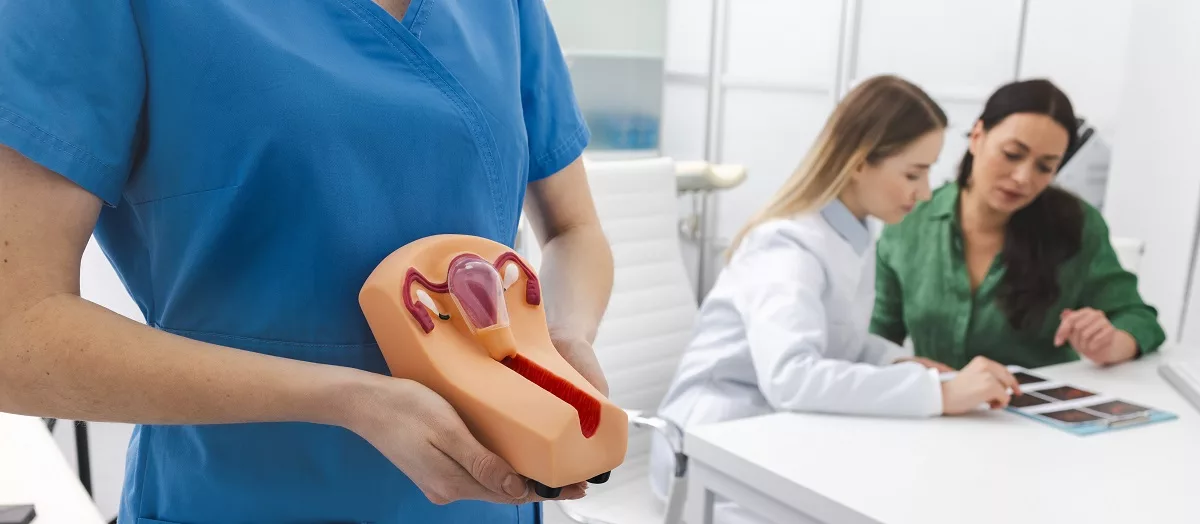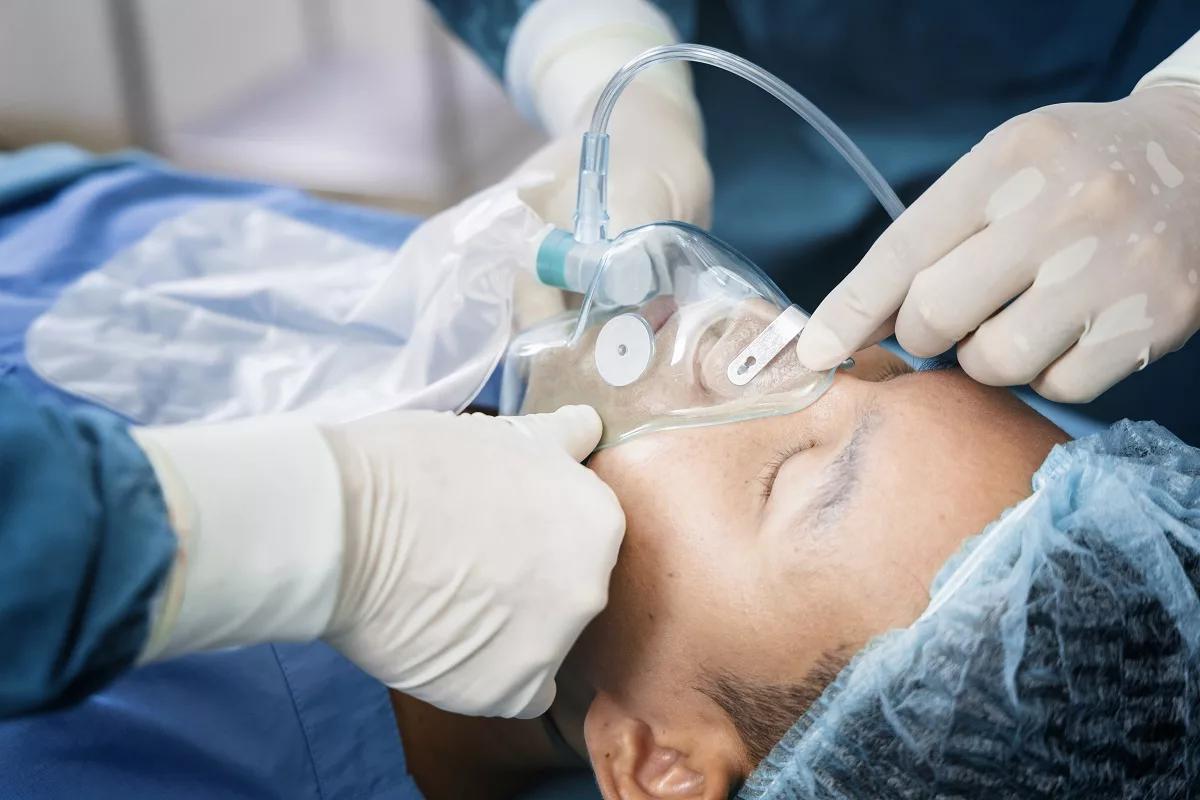A health condition in which a part of the large bowel slips down inside the anus is called rectal prolapse. It occurs when the muscles that hold it in place become weakened. Usually, this disorder looks similar to hemorrhoids. While hemorrhoids may go away on their own, rectal prolapse requires surgery to fix it.
The last part of the large bowel (before the anus) is called the rectum. In this part of the intestine, the poop prepares to go away from the body. When it reaches the rectum, it triggers an urge to defecate. Moreover, a network of muscles pushes the stool out through the anus. However, if a person develops rectal prolapse, the rectum moves from its normal position into the anal canal (sometimes even out the other side).
Generally, the medical term “prolapse” is used by doctors to describe any part of the body that moves from its original position. In most cases, it means the muscles that support specific organs are weakened or deteriorated.
This condition affects about 2.5 out of 1000 people.
Symptoms
Usually, people with rectal prolapse may notice the following symptoms. Examples include:
- Leakage of mucus, poop, or blood from the anus
- Anal itching and pain
- Red and fleshy mass hanging out of the anus
- A feeling of pressure or a bulge in the anus
- Some people may also feel like something is left inside after defecation
Do not ignore previous symptoms and get medical help if any of them occur because this condition does not go away on its own.
Causes
There are multiple factors that could contribute to rectal prolapse. However, anything that weakens the muscles that hold the rectum in place may lead to this disorder. Check below the most common causes:
- Aging – Muscle weakness is often a part of aging.
- Pregnancy and childbirth
- Recent injury or surgery to the pelvic area
- Intestinal parasitic infections
- Chronic diarrhea or constipation
- Chronic cough or sneezing
- Cystic fibrosis
- Spinal cord or nerve damage
What is the Difference between Hemorrhoids and Rectal Prolapse?
Nonetheless, both disorders cause similar symptoms, and it is not common to mistake one for the other. In general, hemorrhoids are a condition in which blood vessels in the anus or rectum become swollen. As a result, it causes bleeding, itching, and pain. Moreover, this condition may also prolapse, which makes it look similar to rectal prolapse.
In addition, both conditions may occur during pregnancy and in people with chronic constipation or diarrhea. While hemorrhoids often happen due to excessive straining, there are multiple factors that may cause rectal prolapse. Furthermore, hemorrhoids may come and go, but rectal prolapse is a progressive and chronic disorder that may cause serious health problems if it is left untreated.
What Are The Long-term Effects of Rectal Prolapse?
In general, you can take care of this disorder at home because it often does not cause severe symptoms. Usually, doctors recommend to lie down on the side with the knees on the chest. Thereafter, use a warm cloth to gently push the rectum back into place. In any case, this disorder will continue to worsen until you get treatment. Check below some complications that people with rectal prolapse experience:
- Fecal incontinence – When the anal muscles are stretched, it may increase difficulty holding gas and poop. However, about 50% to 75% of people with rectal prolapse experience this complication.
- Constipation – Problems with the muscles that hold the rectum in place may cause difficulty evacuating the stool.
- Rectal ulcers – Sometimes, exposure to the mucous lining of the rectum may cause painful sores, which may even lead to bleeding. Without treatment, it may lead to anemia.
- Incarceration – This complication causes the rectum to get stuck hanging out of the anus, and it cannot be pushed back. As a result, the blood supply is interrupted, which often leads to tissue death and decay of the rectum (also known as gangrene).
- Nerve damage
- Fever
- Recurrent rectal prolapse
This document does not contain a complete list of rectal prolapse complications. However, you can consult with your doctor about ways to reduce the risk or even prevent previous complications.
Is There a Way to Prevent Rectal Prolapse?
There are some tips that may help reduce the risk of developing rectal prolapse and its recurrence. For example:
- Manage chronic intestinal disorders – It is important to get treatment for chronic constipation or diarrhea. Usually, doctors recommend medicines, lifestyle and dietary changes, and supplements.
- Kegel exercises – These exercises are the best way to strengthen the pelvic floor muscles. It helps prevent incontinence as well as pelvic organ prolapse.
Diagnosis
Usually, doctors begin the diagnosis with an evaluation of your medical history and a physical examination to check for abnormalities linked to the disease. However, to confirm this disorder, they may perform some tests and examinations. For example:
- Digital Rectal Examination – It uses lubricated gloved fingers to examine the rectum and anus.
- Defecography – During this procedure, doctors examine the rectal muscles while you pooping using X-ray or MRI (magnetic resonance imaging).
- Anorectal manometry – This test is used to measure the tightness and strength of the anal sphincters.
- Lower GI series (barium enema) – During this test, doctors perform a series of video X-rays of the lower gastrointestinal (GI) tract.
- Colonoscopy – This test involves a long and flexible tube with a lighted camera on the end that allows doctors to see inside the rectum and other parts of the large intestine.
- Electromyography (EMG) – Usually, doctors perform this test to rule out nerve damage as a potential cause of improper function of the anal sphincters.
Additionally, people with weak pelvic floor muscles may also develop any of the following conditions along with rectal prolapse. Therefore, once you are diagnosed with rectal prolapse, doctors may perform additional tests to check for the following disorders. Examples include:
- Rectocele
- Pelvic floor dysfunction
- Urinary incontinence
- Small bowel prolapse
- Vaginal prolapse
- Bladder prolapse
Treatment
Doctors usually recommend different treatments for people who develop rectal prolapse. It often depends on the severity of the condition, existing health problems, age, and preferences. One of the most common treatments used to treat this disorder is a rectopexy. It helps repair the rectum through the abdominal area. However, this treatment is not an option for everyone. Check below for other treatments used to fix a rectal prolapse:
Rectal Approach
Doctors often prescribe this treatment when abdominal surgery is not possible. In such cases, the condition is treated through the anus. Moreover, the rectal approach is also a good option for people with mild prolapse or when the rectum is stuck on the outside. Check below the most common procedures:
- Altemeier procedure – During this procedure, surgeons will remove the prolapsed rectum through the anus and the lower part of the colon (also known as the sigmoid colon). Thereafter, they will sew the ends of the large intestine back together, and it becomes your new rectum. Usually, people recover faster from rectal approach procedures because they are less invasive compared to open abdominal surgery.
- Delorme procedure – This treatment is often recommended by doctors in mild cases. For example, a mucosal prolapse or a small external prolapse. During this procedure, surgeons will remove the prolapsed mucosal lining of the rectum and then fold back the muscle wall of the rectum onto itself. In most cases, the double muscle wall helps reinforce the rectum.
However, treatments used to fix a rectal prolapse may cause some complications. Check below some of them:
- Bleeding
- Infection
- Blood clots
- Injury to nearby structures and organs
- Anastomotic leak – This complication usually occurs when the two ends of the bowel cause it to leak. It often requires another surgery to fix it.
- Constipation
- Sexual dysfunction – In rare cases, rectoplexy can cause damage to the nerve that connects with the male sexual function.
Frequently Asked Questions
Is rectal prolapse serious?
While some people develop a mild form of the condition that often does not cause severe symptoms and complications, others may experience serious and even life-threatening health problems. In such cases, early diagnosis and proper treatment can prevent them.
What does rectal prolapse look like?
This condition usually looks different among people. For instance, if you have an internal prolapse, the rectum may drop partly into the anus, but it does not come out of the other end. If you have a mucosal prolapse, the rectum turns inside out to poke out the anus.
Will rectal prolapse go away on its own?
While in some children rectal prolapse goes away after treating the underlying condition, in adults, this disorder does not go away without treatment. For instance, if your child develops a rectal prolapse due to diarrhea, hard stools, or a parasite infection, it will go away after treating previous health problems. In general, the muscles will repair themselves because the child continues to grow. Ask your healthcare provider if you have additional questions.




